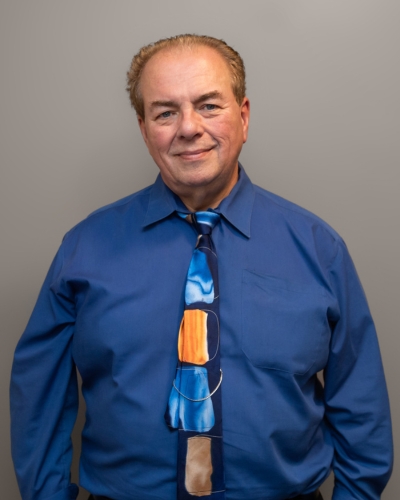Obsessive-compulsive disorder (OCD) is a prevalent mental health condition, often enveloped in misconceptions and stereotypes. At its core, OCD is more than just being overly neat or afraid of germs; it’s a complex disorder that significantly impacts the lives of those it touches.
So, how do you know if you have OCD? Self-assessment exercises can shine a light on your behaviors that might signal OCD, suggesting when it might be time to seek professional guidance. This piece aims to equip you with methods to identify potential symptoms, distinguish OCD from anxiety, and understand the steps to take upon recognizing signs of OCD manifestation.
Understanding OCD
OCD is a mental health condition marked by an enduring pattern of unwelcome thoughts and ritualistic behaviors. These obsessions spur individuals to engage in compulsive acts as a means to mitigate the resultant anxiety. Such a cycle consumes considerable time and significantly detracts from one’s quality of life, underscoring the necessity for professional intervention.
The condition has a cyclic nature, where obsessions lead to compulsions in an attempt to alleviate distress. This repetitive process can profoundly affect an individual’s daily functioning and well-being, highlighting the importance of comprehensive treatment approaches.
Do You Have OCD? – Exploring Symptoms Through Self-Assessment
Self-assessment tools and exercises as OCD indicators are designed to help individuals reflect on their behaviors and thought patterns that may suggest OCD tendencies.
Let’s explore a few examples of how everyday behaviors and rituals might indicate OCD symptoms:
- Reflect on Your Cleaning Rituals: If you cannot touch objects without a compelling need to clean your hands immediately afterward, this might signal an OCD-related ritual.
- Consider Your Reactions to Symmetry and Order: People with OCD may feel significant distress or unease if they cannot arrange objects ‘just so’ or if things feel out of place to the extent that it disrupts their day.
- Pay Attention to Checking Behaviors: Repeatedly checking doors, appliances, or emails beyond reasonable precaution could indicate OCD symptoms.
OCD self-assessment tools can be an informative first step for individuals seeking clarity about their symptoms. Some online OCD quizzes can help evaluate behaviors and thoughts that may indicate OCD.
However, it’s imperative to approach these tools with caution. While these quizzes can highlight potential OCD symptoms, they lack the nuance and depth of a professional evaluation. You should consider the results as indicators, not as a diagnostic.
The complexity of OCD, with its varied manifestations and degrees of severity, necessitates a comprehensive assessment by a mental health professional. A formal diagnosis involves ticking off symptoms and understanding their impact on an individual’s life.
If a self-assessment quiz suggests the possibility of OCD, it is essential to follow up with a mental health professional. They can offer a detailed diagnosis and craft a personalized treatment plan, ensuring the best approach to managing the condition.
Anxiety or OCD? – Identifying the Differences
Anxiety is often mistaken for OCD and vice versa, primarily because both conditions involve heightened levels of worry and stress. However, distinguishing between them is crucial for effective treatment, as they differ significantly in their manifestations and management strategies.
Diagnosis Criteria
- OCD: Diagnosed based on the presence of obsessions (intrusive, unwanted thoughts) and compulsions (behaviors aimed at reducing anxiety related to these thoughts).
- Anxiety: Diagnosed primarily based on excessive worry and fear across various contexts, not limited to specific obsessions or compulsions.
Ritualistic Behaviors
- OCD: Engagement in ritualistic behaviors (compulsions) is a hallmark performed to alleviate the distress caused by obsessions. An example of an OCD ritual could be checking the stove multiple times before leaving the house to ensure it’s off, driven by a severe obsession with the thought it might cause a fire.
- Anxiety: This may involve avoidance behaviors but not ritualistic compulsions aimed at neutralizing obsessions. Anxiety could involve avoiding driving altogether due to a pervasive fear of getting into an accident without specific rituals.
Thinking Patterns
- OCD: Obsessive thoughts are typically irrational and recognized as such by the individual, but they are unable to stop them. These thoughts include irrational beliefs, such as thinking that touching a doorknob will undoubtedly lead to illness.
- Anxiety: Worries are more generalized, often about real-life concerns, although exaggerated. It involves exaggerated but not ritual-linked concerns, such as worrying excessively about job security without specific feared scenarios.
Physical Symptoms
- OCD: Anxiety symptoms stemming from obsessions or the urge to perform compulsions. For example, physical signs can manifest as sore and chapped hands from excessive washing due to fears of contamination and an obsession with cleanliness.
- Anxiety: A broader range of physical anxiety symptoms, such as restlessness, muscle tension, and sleep disturbances, are not necessarily linked to specific thoughts or actions.
Treatment Options for OCD
While these self-assessments can provide insights, it’s important to remember they do not replace a professional diagnosis. Effective management of OCD involves a combination of therapies tailored to the individual’s specific needs. The cornerstone treatments include:
- Cognitive Behavioral Therapy (CBT): Specifically, a type known as exposure and response prevention (ERP) is highly effective. This approach involves gradual exposure to the source of anxiety and teaching the individual to refrain from compulsive behavior.
- Medication: Selective Serotonin Reuptake Inhibitors (SSRIs) can help reduce the symptoms of OCD by affecting neurotransmitters in the brain involved in mood regulation.
- Combination Therapy: Often, a blend of medication and psychotherapy is most effective, addressing both the biological and psychological aspects of OCD.
- Lifestyle Changes: Stress management techniques, regular physical activity, and a balanced diet contribute to overall well-being and potentially mitigate some of the effects of OCD.
When to Seek Professional Help
Identifying the right time to seek professional help is pivotal in managing OCD effectively. If OCD symptoms are causing significant distress and interfering with daily routines, work, or relationships, it’s crucial to consult a mental health professional.
A formal diagnosis can provide a clear understanding of the condition and open the door to specialized treatment options. Early intervention can significantly improve the quality of life, making it essential not to delay seeking help based on the hope that symptoms will resolve independently.





 Michaela Welk, LMHC
Michaela Welk, LMHC Bunny Berman
Bunny Berman Tank
Tank Richard E. LoSardo, MD
Richard E. LoSardo, MD Christopher Payne
Christopher Payne Bernard Benjamin
Bernard Benjamin Tiffany Bellino
Tiffany Bellino